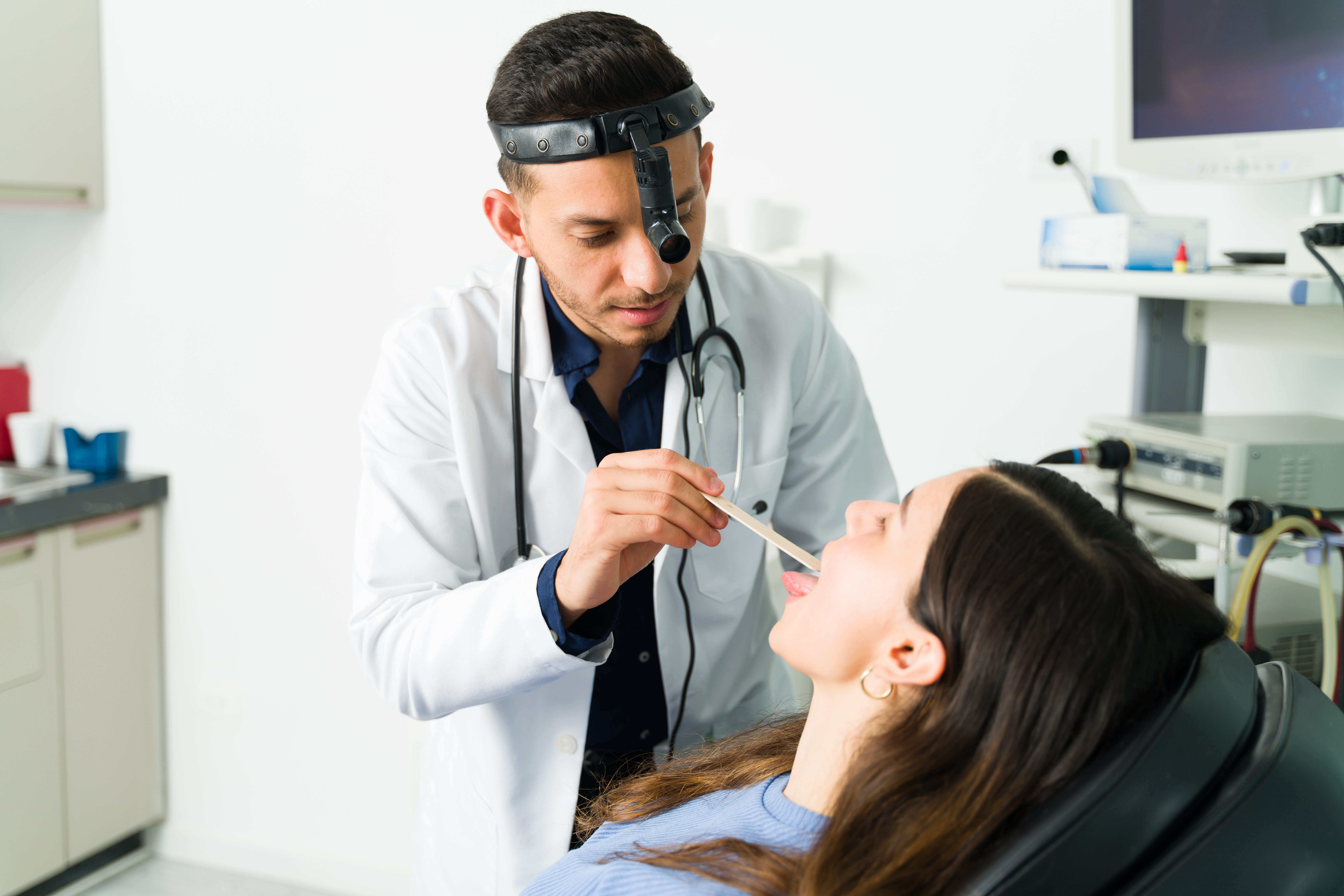When it comes to your oral health, even subtle symptoms can suggest a deeper problem. In fact, the World Health Organization (WHO) has said that the presence of oral disease, which affects roughly 3.5 billion people worldwide, is “a key indicator of overall health, well-being and quality of life.” In particular, cancers of the oral cavity are among the top 15 most common cancers worldwide, accounting for almost 180,000 deaths each year. Experts say it’s essential to learn the common symptoms associated with them, including one you may notice on your tongue. Read on to learn which symptom may signal oral cancer, and how to distinguish it from a near-identical—but far less serious—condition.
RELATED: If You Notice This in the Bathroom, Get Checked for Cancer.


Most of us have endured the pain and discomfort of a canker or cold sore at some point in our lives. These mouth ulcers are uncomfortable, aesthetically unpleasant, and make eating and maintaining oral hygiene more difficult. The good news: they generally only last about two weeks and aren’t considered dangerous in most cases. However, this year nearly 54,000 people in the U.S. will have a sore, lump, or patchy spot in their mouth that turns out to be oral cancer, warns the American Cancer Society (ACS).
With little consistent patient screening or education on this disease, many people are unaware of the risk for this potentially life-threatening condition. A commonly missed symptom for oral cancer is unusual changes or sores in your mouth that don’t heal within two weeks. If you notice this—or if you develop a sore that bleeds—it’s important to have your doctor or dentist check it out.
RELATED: Taking Too Much of This Supplement Makes Your Cancer Risk Soar, Study Says.


While oral cancer accounts for just 3 percent of all cancers, it can be an aggressive disease depending upon when it is diagnosed. Unfortunately, it can be difficult to distinguish between a canker sore, cold sore, or oral cancer lesion—especially during the early stages when these ulcerations can appear similar. Experts say that the duration of the sore is a key indicator of cause for concern. While a typical cold or canker sore will heal within about two weeks, it can be a sign of a bigger problem if it lasts longer.
According to the Mayo Clinic, there are a number of other symptoms to look out for in addition to a sore that doesn’t heal. These include a white or reddish patch on the inside of your mouth, loose teeth, a growth or lump inside your mouth, mouth pain, ear pain, or difficult or painful swallowing. While these symptoms may also be indicative of other ailments, it is important to visit your doctor or dentist to rule out a cancer diagnosis early on.


A number of lifestyle factors may be moving you into higher risk for oral cancer. High levels of alcohol consumption, tobacco use, and unprotected time in the sun all raise your chances for developing the disease (though the latter typically forms on the lip, rather than inside the oral cavity).
Exposure to the Human Papillomavirus (HPV), a sexually transmitted disease, also increases your risk. “The overall rate of new cases of oral cavity and oropharyngeal cancers has risen only slightly over the past 20 years. But during this same time, there has been an increase specifically in oropharyngeal cancers associated with an human papillomavirus (HPV) infection in both men and women,” says the American Cancer Society. According to the CDC, 85 percent of sexually active people will get an HPV infection in their lifetime, impacting nearly 13 million Americans overall. Researchers note that while this virus usually goes away on its own, any infections that don’t clear up can be the cause of a variety of cancers including oral cancer.
Your age and gender also factor into whether you are considered high risk for oral cancer. People over the age of 40 are most at risk of contracting it at an average age of 63. Men are affected twice as frequently as women.
For more health news sent directly to your inbox, sign up for our daily newsletter.


Experts suggest that there are several steps you can take to slash your odds of oral cancer. Avoiding tobacco and alcohol—especially in combination—can greatly reduce your risk, they say. “The combination of tobacco and alcohol use increases the risk of head and neck cancer even more than either of the two alone,” notes the site for the Memorial Sloan Kettering Cancer Center. “Studies have shown that people who use tobacco and alcohol together have a substantially greater risk of mouth cancer than people who only smoke or who only drink. According to the National Institutes of Health, nicotine and alcohol together account for around 80 percent of mouth cancer in men and around 65 percent of mouth cancer in women,” Cancer Center experts write.
Additionally, Healthline reports that eating a healthy diet with plenty of fruits and vegetables may help lower your risk of oral cancer, as can brushing your teeth twice daily, and flossing regularly. If you are age eligible, get the full course of the HPV vaccine (up through age 45). And, finally, speak with your doctor and dentist if you notice any abnormal sores on the tongue or oral cavity that won’t seem to go away.
RELATED: If These 2 Body Parts Hurt You, It Could Be a Sign of Cancer, Study Says.